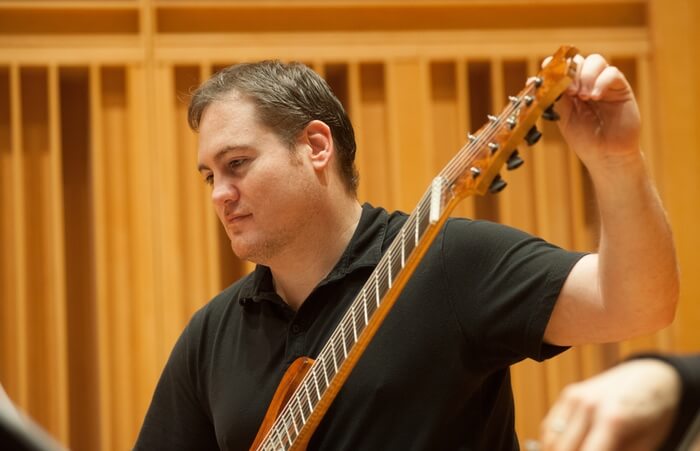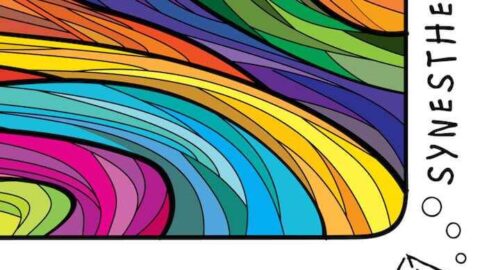synesthesia | sinəsˈTHēZHə |
n. the production of a sense impression relating to one sense or part of the body by stimulation of another sense or part of the body
Put another way, “synesthesia” is a kind of mixture; a natural and irrepressible reaction when two or more senses collide, leaving the body with a unique experience that can be difficult to understand unless you have personally experienced it.
If you can’t imagine what it might sound like to create a purely synesthetic musical experience, Anthony Joseph Lanman’s new album Synesthesiac might just be the place to begin your search. In style, structure, and language, Lanman embraces the myriad of music that inspires him. Even more impressive, he channels each of his many influences into a cohesive and articulate style of his own.
Lanman’s opening track, entitled “Rush,” captures this effort perfectly. Written for electric guitar, electric cello, alto saxophone, and accordion, “Rush” initiates the listener to Lanman’s sound world with elements of progressive rock, jazz, and concert music. The accordion timbre comes as a bit of a shock at times—especially when it plays a prominent role in an otherwise thinly orchestrated section—but Lanman’s treatment of it makes you forget its peculiarity for a significant portion of the piece. The electric guitar timbre implicitly imbues this track with an aura of “rock,” while the alto saxophone and electric cello soften the music a bit, invoking some of the more traditional aspects of contemporary chamber music. Most importantly, though, (and I certainly can’t remember the last time I said this about an accordion) this track grooves.
Lanman’s album alternates between stand-alone chamber works and a group of short character pieces for solo piano called Hommages for Piano. Each of these Hommages pays tribute to a person who has inspired Lanman’s work, and the dedicatees range from Japanese filmmakers (Kurosawa) to playwrights (Tony Kushner) to physicists (Michio Kaku). Lanman’s awareness of his diverse influences helps him in this extensive project: each has a unique structure and character inspired by its subject, yet each is clearly still the work of one pen. From this group, my favorite work was the last track on the album, “Hommage a Frank Zappa,” which was directly inspired by Zappa’s song “Inca Roads.” Written as a two-part invention, this has the rhythmic energy and melodic grit of Zappa’s song with a touch of the refinement so often associated with inventions. Lanman once again finds a way to mix disparate styles and influences—this time Frank Zappa and Bach—in a creative and convincing work.

The least convincing track on Synesthesiac was “Siùil ò Rùn.” Despite the appealing mélange of styles that seem to define this album, “Siùil ò Rùn” seemed too distinct from the other chamber works to be a convincing addition. This criticism, however, comes with a substantial caveat: “Siùil ò Rùn” is stunningly beautiful, both in construction and performance. Jennifer Lanman’s voice captures the Irish melody with elegance and ease, bringing life to an already beautiful song. Lanman’s development of the piano accompaniment, performed here by Kaoru Yamamura, is equally impressive, but the track nevertheless seemed too detached from the others.
All of the performers Lanman worked with gave extremely convincing interpretations of his works. A potential danger that one might image for Lanman’s eclectic musical language is a clash between medium and style—it’s not often, after all, that you hear an accordion in contemporary chamber music. Lanman’s performers embraced the synesthesia, however, both in the solo tracks and those for ensembles.
It took me a little time to warm up to Synesthesia and Lanman’s style, but once I did, I found this album compelling. A teacher once told me that very often if a piece of music doesn’t immediately capture your attention, the problem isn’t with the piece but with the way you’re listening. This was almost certainly the case with Synesthesia. The interesting blend of Lanman’s interests—both musical and otherwise—are rewarding in the ways that they comment on one another. Put another way, these influences very often “produce the sense or impression” of each other; synesthetic indeed.
























